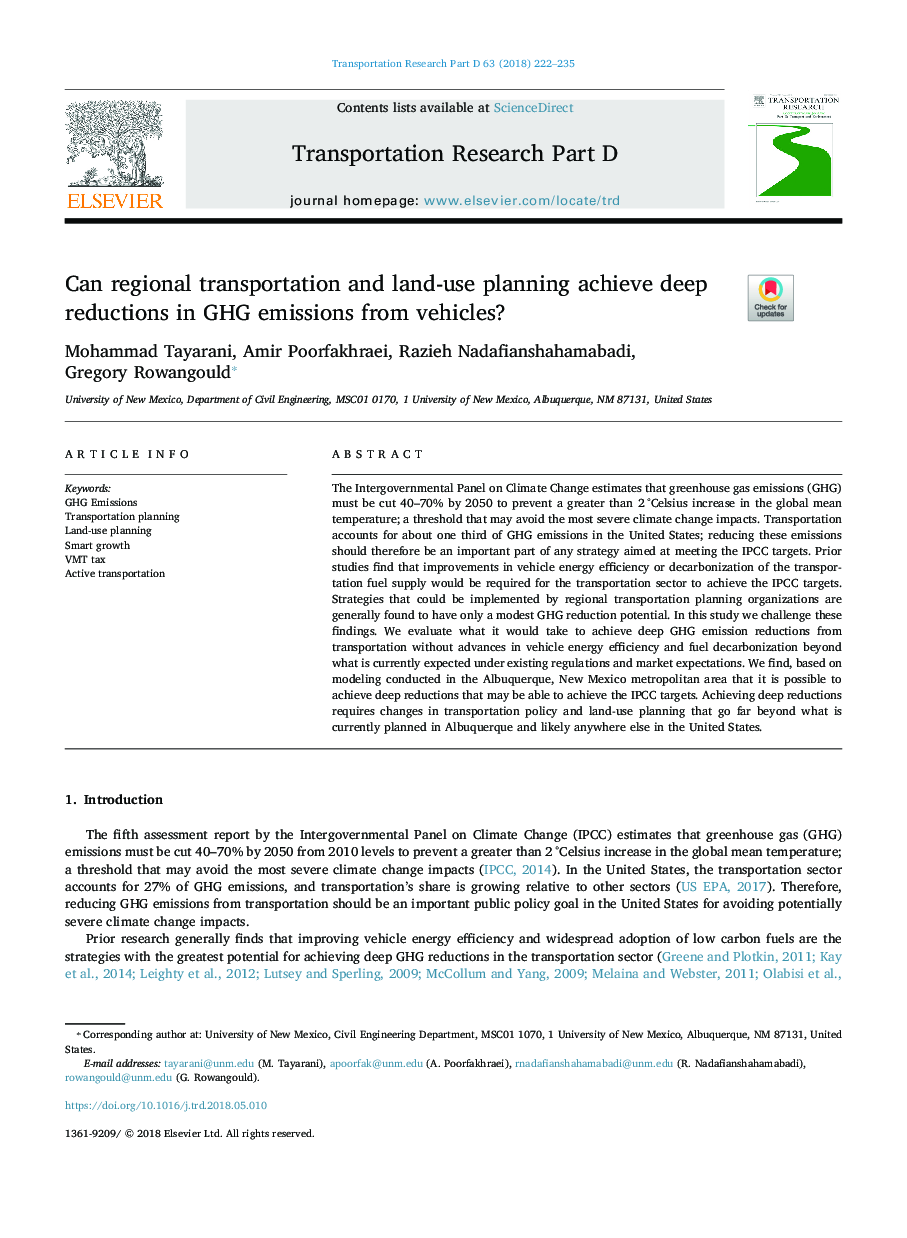| Article ID | Journal | Published Year | Pages | File Type |
|---|---|---|---|---|
| 7498369 | Transportation Research Part D: Transport and Environment | 2018 | 14 Pages |
Abstract
The Intergovernmental Panel on Climate Change estimates that greenhouse gas emissions (GHG) must be cut 40-70% by 2050 to prevent a greater than 2â¯Â°Celsius increase in the global mean temperature; a threshold that may avoid the most severe climate change impacts. Transportation accounts for about one third of GHG emissions in the United States; reducing these emissions should therefore be an important part of any strategy aimed at meeting the IPCC targets. Prior studies find that improvements in vehicle energy efficiency or decarbonization of the transportation fuel supply would be required for the transportation sector to achieve the IPCC targets. Strategies that could be implemented by regional transportation planning organizations are generally found to have only a modest GHG reduction potential. In this study we challenge these findings. We evaluate what it would take to achieve deep GHG emission reductions from transportation without advances in vehicle energy efficiency and fuel decarbonization beyond what is currently expected under existing regulations and market expectations. We find, based on modeling conducted in the Albuquerque, New Mexico metropolitan area that it is possible to achieve deep reductions that may be able to achieve the IPCC targets. Achieving deep reductions requires changes in transportation policy and land-use planning that go far beyond what is currently planned in Albuquerque and likely anywhere else in the United States.
Related Topics
Life Sciences
Environmental Science
Environmental Science (General)
Authors
Mohammad Tayarani, Amir Poorfakhraei, Razieh Nadafianshahamabadi, Gregory Rowangould,
